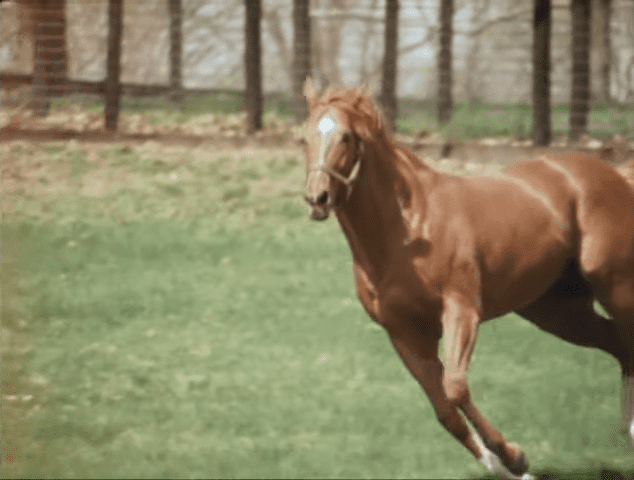Secretariat, also known as Big Red, after his big-time career enjoying retirement in Paris, Kentucky. As he was retired only after two seasons of racing in 1973, at a young age of 3 years old, he was still full of energy.

As Secretariat was an incredible racehorse, he of course was intended to be bred to other mares. Secretariat was retired to the very same Claiborne Farm in which he is seen at in this video. At first, he was bred to three non-Thoroughbred mares in December 1973 to test his fertility. One of those mares, an Appaloosa named Leola, produced Secretariat’s first foal in November 1974. The colt (horse baby boy) was named First Secretary and was a chestnut like his sire, but spotted like his dam.

After his first foal turned out to be healthy, the first official breeding season began. The first offspring included such horses as Dactylographer and Canadian Bound who was the first Thoroughbred yearling to break the $1 million pricing barrier when being sold for $1.5 million dollars. However, Canadian Bound was a complete failure in racing, like most of Secretariat’s early foals, so for several years the value of his offspring was declined. At the same time when the raise of Northern Dancer’s popularity, his genes were much more preferred for breeding.

Later on, because Secretariat did not produce male offspring of his own ability and did not leave a leading sire son behind, his legacy was assured through the quality of his daughters. Several of them were excellent racers and even more were excellent producers. In 1992, Secretariat was the leading sire for breeding in North America.

Why is Secretariat so special?
Secretariat was a racing champion and is regarded as one of the greatest racehorses of all time until this day. Secretariat’s 1973 performance in the third Triple Crown race at Belmont Stakes, where he bested his closest competitor by a mind-blowing 31 lengths. He is widely considered one of the most stunning horse races of all time. His times in all three Triple Crown races remain the fastest in history.
